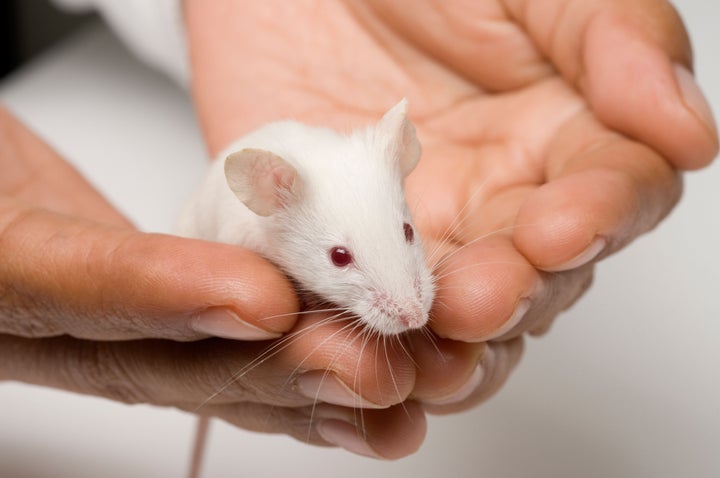
Fifty years ago, Rachel Carson shocked the world and gave birth to the modern environmental movement with the publication of Silent Spring. Her clear warning forever changed the way we dealt with pesticides.
Without intending to exaggerate, let me say that it is possible that my colleague at The Evergreen State College, Bret Weinstein, may have made a discovery that is every bit as alarming. His work calls into question the standard model we use to assess potentially negative impacts of drugs. If his analysis is correct, we may well be greatly misunderstanding long-term interactions drugs can have on our bodies, both with respect to cancer formation and significant tissue damage.
To understand what Bret has found, you have to first have a basic understanding of the mechanism via which cells reproduce and die. The part that concerns us here are the tips of chromosomes, called telomeres. When a cell reproduces, its chromosomes duplicate and the two daughter cells each have (mostly) identical, newly formed chromosomes. The telomere plays an important role in this process by protecting the genes toward the end of the chromosome.
As amazing as it is, chromosomal replication is not a perfect process. Each time replication occurs some of the nucleotides at the end of the chromosome are lost and when these lost nucleotides are part of a gene, the gene can no longer function appropriately. Telomeres which are strings of excess nucleotides, nucleotides that are not part of any gene, serve as caps on the end of chromosomes. Every time a chromosome replicates, some of the material that makes up the telomere degrades making it shorter and less functional. Over time, the telomere will become critically short and the cell will no longer be able to divide.
This is well accepted science and Elizabeth Blackburn, Carol Greider, and Jack Szostak were awarded the 2009 Nobel Prize in Physiology or Medicine for their role in discerning how telomeres protect chromosomes during replication. What is also fairly well accepted is the evolutionary reason why telomeres themselves are not longer or are not fully replaced; their limited size means that individual cells can only replicate a finite number of times before they are no longer functional. This effectively provides a natural mechanism keeping cells from reproducing wildly -- or from becoming cancerous. (The cancers we do see have found a way around this safety mechanism. Without it, cancer would be far more common than it currently is.) The serious downside to this, though, is that as cells, and the organisms in which they reside, age, they are less able to remain healthy and repair various sorts of lesions. In essence, there's a balance between cancer prevention and the ravages of aging; warding off the former leads to the latter.
Here's where Bret's ideas come into play. Domestic mice are the animal model of choice for evaluating the effect of drugs and other chemicals on humans. The problem with this is the fact that virtually all mice used in experiments come from the same source and, unwittingly, humans have provided strong artificial selection for remarkably long telomeres in these organisms. Indeed, laboratory mice have far longer telomeres than do their wild relatives.
Why is this so important? As Bret and Deborah Ciszek, his co-author noted in their article in Experimental Gerontology,
With their telomeric failsafe effectively disabled, these animals are unreliable models of normal senescence and tumor formation. Safety tests employing these animals likely overestimate cancer risks and underestimate tissue damage and consequent accelerated senescence.
In other words, using these animals can be terribly misleading. Not surprisingly in light of their chromosomal structure, laboratory mice are notoriously susceptible to cancer while demonstrating extraordinary ability to replace damaged tissue. In this respect, mice are poor predictors for what might happen in humans. Human cells are simply unable to replicate as frequently as those in mice and thus chemical assaults on mice that go unnoticed may well have dire effects in people. Bret believes that this might be the reason that we are increasingly noticing that drugs previously determined to be safe are now being found to lead to various serious ailments like heart disease, liver dysfunction and related organ failure.
Is he right? I honestly don't know -- but I am certain that the science he offers is perfectly sound and that the consequences of his being correct are huge. And I'm confident that there are experiments that could be done to test his hypothesis.
Even more than that, it seems imperative that we think carefully about the ways in which we use lab animals as test organisms. We created the conditions that selected for the telomeres of laboratory mice to be unnaturally long. We need to reverse that process as soon as possible and ensure that this biological aspect of laboratory mice once again mimics the telomere structure of humans. Unless we take this step immediately, there's good reason to believe that many of the controls we've put in place to guarantee our safety simply are not working.
